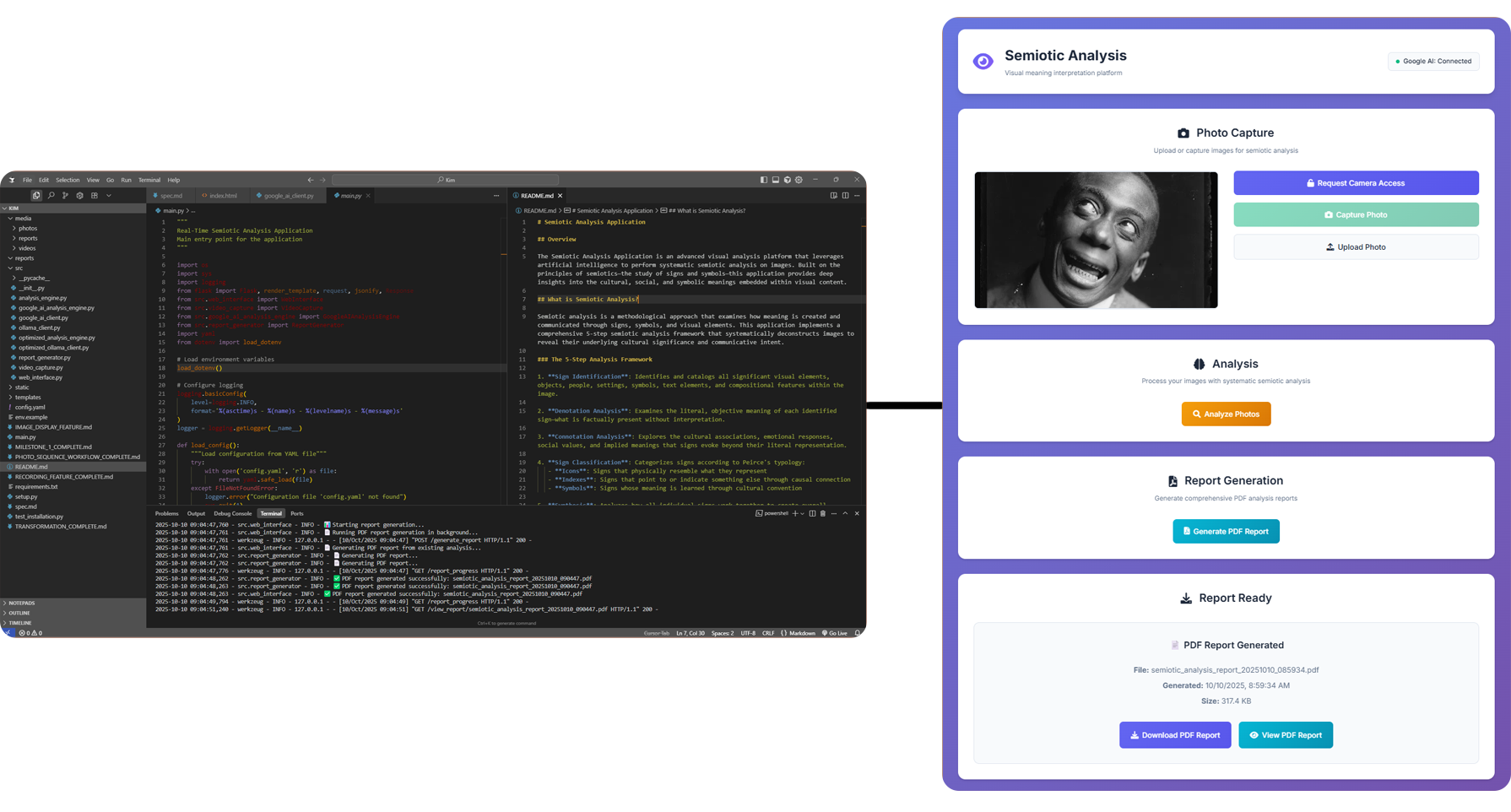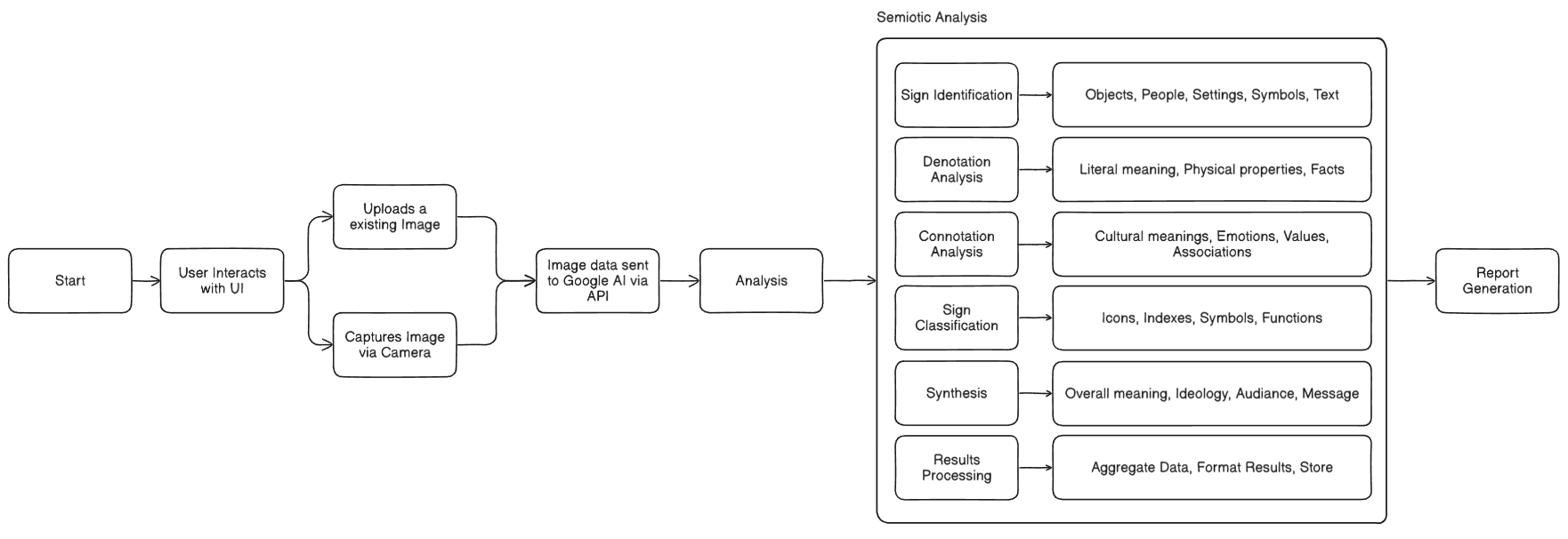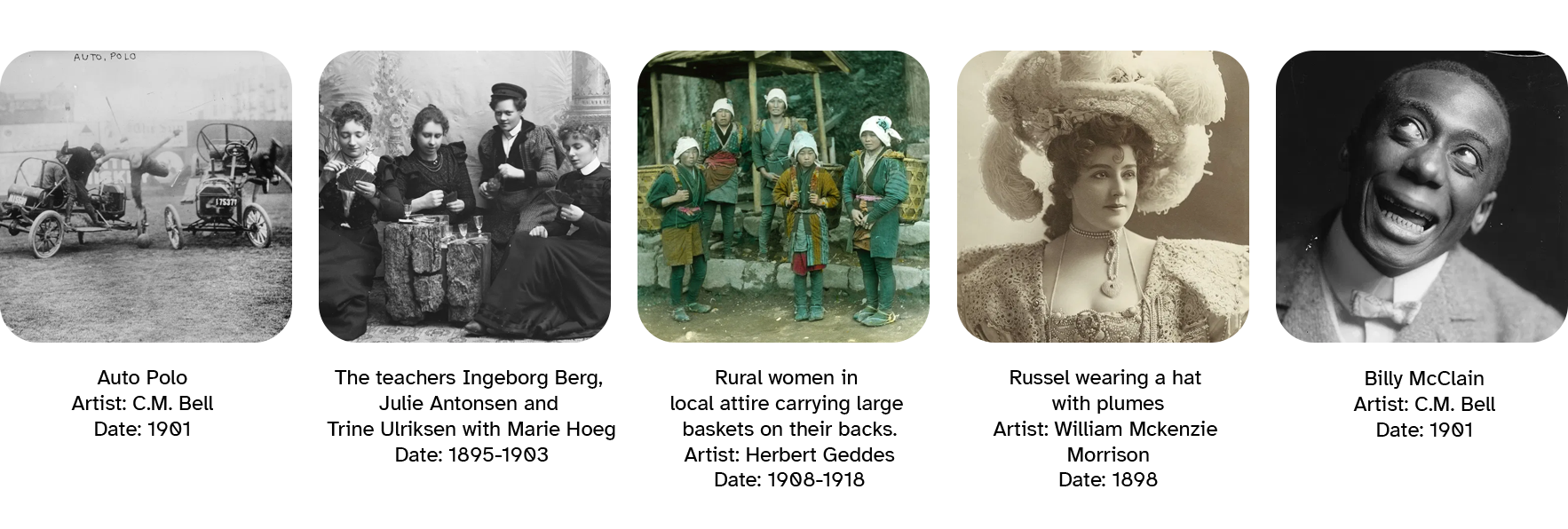Computational Semiotics
The Idea
The core idea was to move beyond simple AI image recognition (object detection) and create a tool that could understand and interpret the meaning behind visual content. Traditional semiotic analysis is a powerful but time-consuming manual process performed by trained experts. I wanted to see if a Large Language Model, guided by a rigorous academic framework, could automate this process. The application was designed to systematically deconstruct an image's signs, symbols, and cultural codes to reveal its underlying messages and ideologies based on Peirce's sign typology, Barthesè cultural analysis and contemporary visual semiotics research.

System Workflow


Development
- Backend & AI Integration: The backend handles image processing and orchestrates the analysis. The core of the system is its integration with Google's Gemini 2.5 Flash model via the Google AI Studio API. A highly structured, multi-part prompt was engineered to guide the AI through a 5-Step Semiotic Analysis Framework (Sign Identification, Denotation, Connotation, Sign Classification, and Synthesis). This structured prompting ensures the output is consistent, detailed, and follows established academic methodology.
- Frontend Interface: The user interface is clean and responsive, built with vanilla JavaScript, HTML5 Canvas for image handling, and CSS. It allows users to either upload an existing photo or capture one directly from their camera. The interface provides real-time status updates while the analysis is in progress.
- Report Generation: After the AI returns the analysis, the Flask backend parses the structured text and dynamically generates a professional, publication-ready PDF report. This report is formatted with a clear visual hierarchy, color-coded sections, and integrates the source image for a comprehensive final document.
Report Components

Report Samples

Links
- Auto Polo Report
- The teachers Ingeborg.. Report
- Rural women in.. Report
- Russel wearing a.. Report
- Billy McCain Report
Reflection
This project proved to be a fascinating exploration of applying AI to a traditionally humanistic field. It demonstrated that with careful prompt engineering and a strong theoretical framework, AI can serve as a powerful tool for cultural and qualitative analysis, not just quantitative tasks. The application successfully transformed a highly specialized, manual method into an accessible and efficient process. The most significant takeaway is the potential for AI to act as a "humanities co-pilot," augmenting human interpretation with speed and scale.
What worked
- Structured Prompting: The 5-step analysis framework translated exceptionally well into a structured prompt, consistently guiding the Gemini model to produce high-quality, relevant, and well-organized analysis.
- Gemini 2.5 Flash Model: The chosen model proved highly capable of understanding the nuanced requests for both literal description (denotation) and abstract cultural interpretation (connotation).
- PDF Report Generation: The automated generation of a professional, aesthetically pleasing report was a major success. It provides a tangible, shareable output that adds significant value for users in academic and professional settings.
- User Workflow: The simple, two-step process (upload/capture and download) makes the sophisticated backend analysis incredibly easy for the end-user to access.
What did not work/ Limitations
- Cultural Nuance: While powerful, the AI's knowledge is generalized. It can sometimes miss highly specific, niche, or very recent cultural contexts that a human expert from that specific culture would immediately recognize.
- Inherent Subjectivity: Semiotic analysis is an interpretive discipline. The AI provides a coherent and well-supported interpretation, but it is still just one possible reading. It cannot account for all potential audience interpretations.
- Processing Speed: For very high-resolution images, the combination of API latency and the time required to generate a complex PDF can lead to delays in receiving the final report.
- Static Framework: The application is currently hard-coded to follow the 5-step framework. It doesn't allow for alternative semiotic methodologies or user-customized analysis steps.
Github
calluxpore/Computational-Semiotics